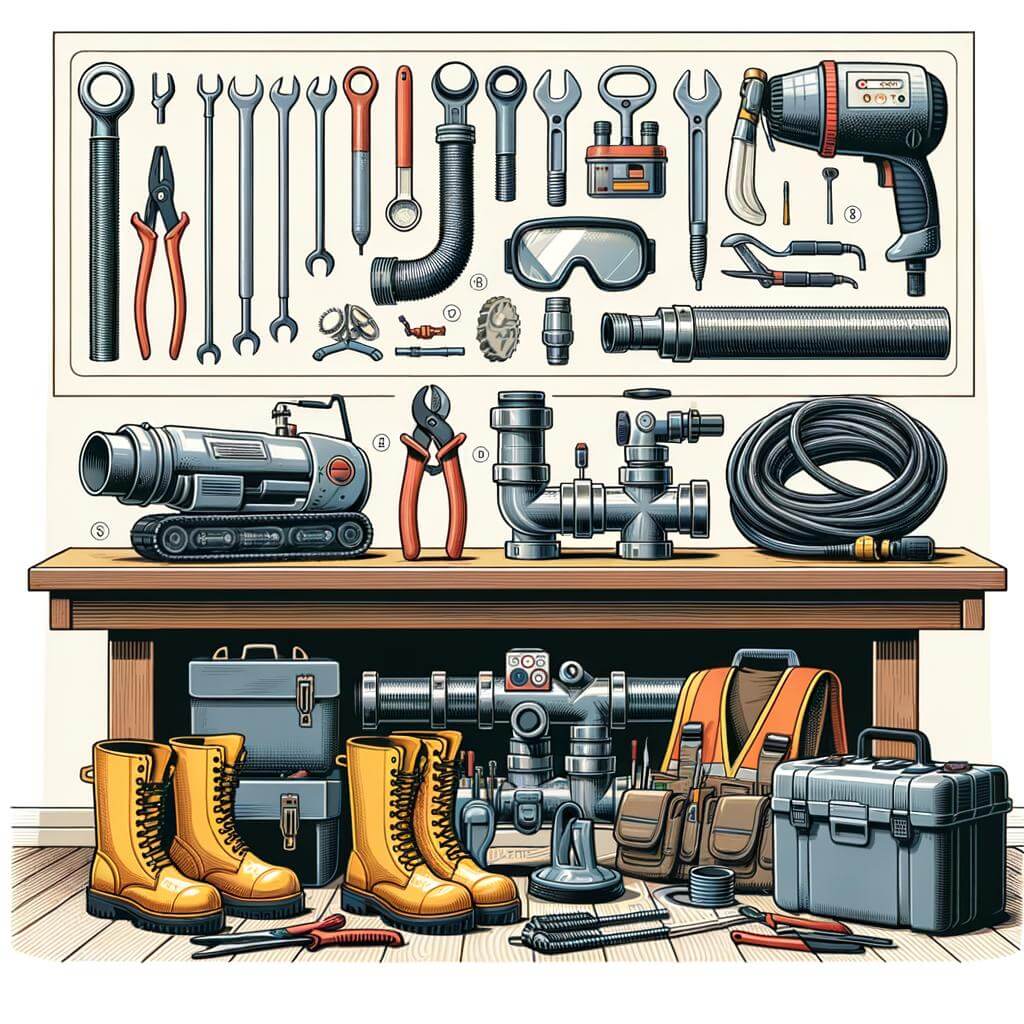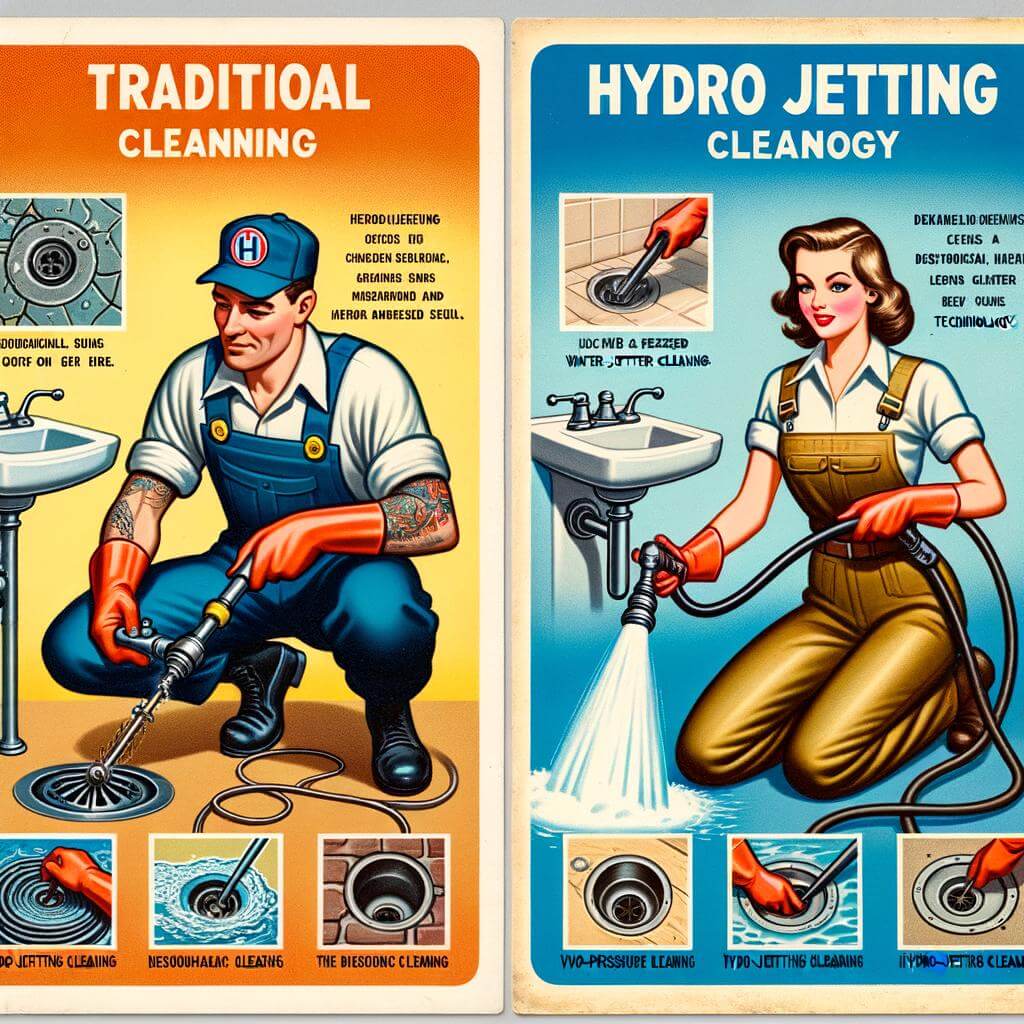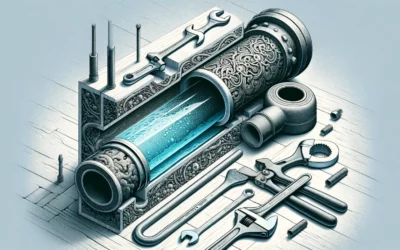Welcome to this comprehensive guide where we’re going to delve into the benefits and basics of DIY Sewer Rooter Cleaning. Around the house, cleaning and maintenance are essential tasks, but sewer cleaning is a topic that many shy away from, often due to a lack of understanding or simply, not knowing where to start. However, with the right information at your fingertips, it becomes a much simpler task than one might think.
This post aims to streamline your understanding of sewer rooter cleaning, teaching you how to perform proper and efficient cleaning all by yourself. By following this guide, you can avoid high professional service costs, gain essential DIY skills, and increase your home’s overall cleanliness and hygiene. With this expert and fact-based guide, you can become your own sewer rooter specialist. Read on to equip yourself with valuable knowledge that will empower you to keep your sewer lines clean, unclogged, and flowing smoothly. Let’s dive in.
Understanding the Importance of DIY Sewer Rooter Cleaning
Many homeowners overlook the important task of maintaining their sewer lines through DIY sewer rooter cleaning. Just like any other part of your home, your sewer lines need regular maintenance to prevent problems that could lead to costly repairs. Taking on this task yourself not only saves you a significant amount of money spent on professional services but also enhances your understanding of your home’s plumbing system. This greater understanding empowers you to deal with minor issues before they turn into major ones.
Getting your hands dirty with DIY sewer rooter cleaning comes with several benefits. Firstly, periodic cleaning ensures smooth operation of your sewer system, eliminating the risk of potential clogs or backups. Secondly, it brings to light any damage that may have gone unnoticed, such as tree roots breaching into the sewer lines. Thirdly, this gives you the opportunity to preserve the structural integrity of your home by preventing water damage potentially caused by leaks or breakages.
DIY Sewer Rooter Cleaning: Key Steps
- Carefully remove the sewer line cap. Always remember to put on protective gear first, like gloves and eye protection.
- Insert the sewer rooter – a specialized drain snake that can reach deep into your sewer lines and break apart blockages.
- Keep turning the sewer rooter handle and navigate it through the line. You’ll feel a certain resistance when it comes into contact with a clog.
- Once the clog is reached, whip the rooter around to break up the blockage.
- After breaking up the clog, remove the rooter and flush the sewer line using a hose. This clears out any residual debris.
| Tools Required | Uses |
|---|---|
| Sewer Rooter | For breaking apart blockages deep within the sewer lines. |
| Gloves and Eye Protection | Protects against potential harm from sewer debris and bacteria. |
| Hose | For flushing out the debris broken up by the rooter. |
In sum, DIY sewer rooter cleaning isn’t just a cost-saving measure; it’s an essential preventative maintenance step that ensures a smooth operating sewer system. So before you find yourself facing an expensive and messy sewer issue, consider adopting a regular DIY sewer rooter cleaning regimen.

Getting to Know the Materials and Tools Needed for Sewer Rooter Cleaning
It might seem daunting at first, but with the right set of tools and materials, DIY sewer rooter cleaning can be a manageable task. To begin with, you will primarily need a sewer auger or rooter machine; a distinct tool specifically created for unblocking sewer lines. Besides, don’t forget the safety gear, including heavy-duty gloves, safety googles, and sturdy work boots. These are important to protect you from unwanted exposure to waste and harmful materials.
Another significant item to have is a quality plumber’s snake, which is especially effective for small to medium blockages. When it comes to substances for breaking down the blockages, an enzyme-based drain cleaner is a must-have. It is eco-friendly and less corrosive compared to other chemical-variety cleaners. Lastly, a hydro jetter is ideal to clear stubborn blockages and clean the inside of the pipe thoroughly
| Tool/Material | Purpose |
| Sewer Auger | For unblocking sewer lines |
| Safety Gear | To protect from exposure to waste and harmful materials |
| Plumber’s Snake | To tackle small to medium blockages |
| Enzyme-based Drain Cleaner | For breaking down blockages, eco-friendly |
| Hydro Jetter | To clear stubborn blockages, cleans the inside of the pipe |
Remember, it’s advisable to understand the functionality of each tool thoroughly before starting the cleaning process. Sewer rooter cleaning is an essential maintenance task, and with the right tools, you can achieve professional-like results at a fraction of the cost.
Step by Step Guide on the DIY Sewer Rooter Cleaning Process
A regular sewer rooter cleaning is essential to keep your home’s plumbing in top condition. However, hiring a professional to do this job can often be expensive. Thankfully, you can take matters into your own hands by performing a do-it-yourself (DIY) sewer rooter cleaning. Here’s a step-by-step guide on how to do it.
Firstly, you’ll need the right equipment. Essential tools include a sewer rooter- which can be rented from any home improvement store, gloves for sanitation and safety, and an inspection camera to identify clogs and blockages. Once these are in place, you can proceed to the cleaning process.
| Step 1 | Use the inspection camera to locate clogs or blockages. You’ll need to feed this through from the sewer clean-out, which is a pipeline outside your home that provides direct access to your sewer line. |
| Step 2 | Once the clog or blockage has been identified, bring in the sewer rooter. This machine uses a rotating coil to break up roots and other debris in your sewer pipe, clearing the way for smoother flow. |
| Step 3 | After the clog has been broken up, flush the pipe with a hose to make sure all the debris has been removed. |
| Step 4 | Use the camera to inspect the drain once more, ensuring that the clog has been successfully removed. If debris remains, repeat the process. |
By following these steps, you can efficiently handle your own sewer rooter cleaning. This DIY approach is not only cost-effective, but it also allows you to understand and take care of your home’s plumbing more effectively.
Remember, however, that while this guide provides a thorough overview, every home’s plumbing system is different. You should still follow all safety guidelines and manufacturer instructions when using the sewer rooter. You should also know when to call in a professional. If the clog is too major, or if there’s potential for damage to your pipes, it may be best to bring in an expert rather than risk further damage.

Best Practices for DIY Sewer Rooter Cleaning Safety
Sewer rooter cleaning may seem daunting and dangerous, but by adhering to a set of best-practice safety measures, you can keep your sewer lines flowing freely without any misadventures. A reminder to always prioritize your well-being, the first recommendation is to equip yourself with the necessary personal protective equipment (PPE). Depending on the task at hand, this might include a pair of sturdy gloves, safety glasses, and a respirator mask. In addition, when using any chemical or electrical tools for sewer rooter cleaning, make sure you have read and understood the user manual to keep safe.
- Sturdy gloves
- Safety glasses
- Respirator mask
| Tool | Safety Precaution |
|---|---|
| Chemical drain cleaners | Avoid direct skin contact and inhalation |
| Electric drain cleaners | Use GFCI protected outlet |
Being cautious of your surroundings is another crucial component in maintaining safety when cleaning your sewer. Ensure your work area is well ventilated to prevent the build-up of harmful fumes. When working outside, be mindful of potential slip, trip or fall hazards and take steps to mitigate them. For instance, put away any loose tools and keep your hoses and wires neatly coiled when not in use. Furthermore, as you will potentially be dealing with bacteria and other pathogens, it’s crucial to thoroughly clean and disinfect your tools and work area when you’ve finished the job to minimize the risk of cross-contamination.
- Ensure a well-ventilated workspace
- Be mindful of slip, trip, and fall hazards
- Thoroughly clean and disinfect tools and workspace
| Activity | Safety Measure |
|---|---|
| Working outside | Be vigilant of potential hazards in your work area |
| Post cleaning | Disinfect tools and workspace |
Dealing with Common Challenges in Sewer Rooter Cleaning
DIY sewer rooter cleaning is a beneficial approach that saves both time and money. However, it presents a set of challenges that need to be addressed to execute it properly. A common problem homeowners face is having to deal with tough blockages. This can occur when the roots of large trees, irrelevant debris or masses of hair accumulate in your sewage system. It’s crucial to use a reliable, high-quality sewer rooter that can power through tough clogs. But even the best tools can get stuck if not used properly. Learn to operate your tool and gain some practical experience before diving into complex clogs.
On top of handling stubborn blockages, another notable challenge in DIY sewer rooter cleaning is maintaining the health and integrity of your pipes. Homeowners need to strike a balance between removing the blockages and preserving the condition of the pipes. An overzealous clean could potentially cause more harm than good, leading to long-term damage. It’s important to avoid using overly aggressive methods or chemicals that could potentially weaken your pipework and cause leaks. Here’s a quick rundown on how to tackle these common challenges:
- Equip yourself with a resilient yet flexible sewer rooter capable of navigating your pipes without causing damage.
- Avoid harsh chemicals that can deteriorate your pipes. Opt for eco-friendly alternatives like vinegar and baking soda.
- Consider using CCTV technology to locate blockages without excessive digging or intrusion into your pipes.
- Exercise patience. Working too quickly or forcefully could lead to bigger problems down the line.
Adhering to these guidelines ensures a smoother cleaning experience. However, if you’re unsure or the problem persists, don’t hesitate to call a professional plumber!
Benefits of Regular DIY Sewer Rooter Maintenance
Keeping your sewer system in good shape is paramount to maintaining a clean, well-functioning home. One of the most crucial preventative measures is performing regular do-it-yourself (DIY) sewer rooter maintenance.
The first and most obvious benefit of timely DIY sewer rooter maintenance is saving money. Ignoring any potential problems can lead to costly repairs down the line. Second, you are extending the lifespan of your sewer system. Regular maintenance ensures your pipes remain in operational condition for many years. Last but not least, such self-care helps in preventing unpleasant odors that can pollute your home environment if the sewer system fails.
- Saves you money: Avoid more expensive professional repairs.
- Extends the lifespan: Keep your sewer system functioning for longer.
- Prevents bad odors: Maintain a clean and pleasant home environment.
Performing regular maintenance not only helps you have a healthier home but also gives you an understanding of how your sewer system works, making you better prepared to handle any issues. Furthermore, this practice fosters a sense of independence and confidence in managing your household needs. Lastly, regular DIY sewer rooter maintenance contributes to environmental sustainability by preventing sewage leaks that can contaminate the local ecosystem.
| Benefits | Description |
|---|---|
| Knowledge gain | Understand how your sewer system works, be prepared for issues |
| Independence | Feel confident managing your household needs |
| Sustainability | Prevent sewage leaks and contribute to a better environment |
How to Evaluate When Professional Help is Needed for Sewer Rooter Cleaning
While sewer rooter cleaning may appear to be a simple DIY project, there are indications to watch for that suggest it might be time to enlist the help of professionals. Some of these symptoms include recurring clogs, foul odors originating from your drains, and slow drainage across multiple fixtures. It’s also crucial to consider the age and overall health of your sewer system. While occasional clogs are normal, frequent issues can signify more serious problems that require expert attention.
To make deciding when professional assistance is needed a little easier, here’s a simple assessment guide:
- Overall Drain Health: Are your drains frequently prompting a sewer rooter cleaning? Regular clogs or slow drainage across multiple fixtures could suggest underlying problems.
- Foul Odor: Persistent foul odors coming from your drain should not be overlooked. It might indicate a severe problem in the sewer system.
- Sewer Age: Old sewer systems are more prone to problems and may require regular maintenance or replacement by professionals.
Moreover, despite all DIY efforts, certain issues are better tackled by professionals. This is largely due to the complexity of these issues or the risk of further damage. Problems such as tree root intrusion, collapsed or broken lines, and severe blockages usually necessitate professional help. Attempting these repairs without the proper skill set and tools can result in more costly issues.
To provide clarity, the following table lists some common issues and whether they can be addressed DIY or require professional help:
\\\\\\\\\\\\
| Issue | DIY or Professional Help |
|---|---|
| Minor Clogs | DIY |
| Recurring Clogs | Professional Help |
| Tree Root Intrusion | Professional Help |
| Broken Sewer Lines | Professional Help |
The Conclusion
In closing, DIY sewer rooter cleaning might seem overwhelming at first glance, but with safety, knowledge, and some elbow grease, you too can keep your sewer system running smoothly. Understanding the benefits, the process, and the precautions beforehand can alleviate the stress associated with this task. Throughout this task, you’ll enhance your skill set, save money, and gain a decent understanding of the inner-workings of your plumbing system. Nonetheless, if the task seems too daunting or if complications occur, seeking professional help is always an advisable option. Remember, apart from saving costs, the value of DIY projects lies in the understanding, responsibility, and care you invest in maintaining your home. Adopt these methods wisely, stay vigilant of any signs that suggest trouble, ensure timely intervention to maintain your sewer systems in good health. Welcome to the world of do-it-yourself home maintenance!









